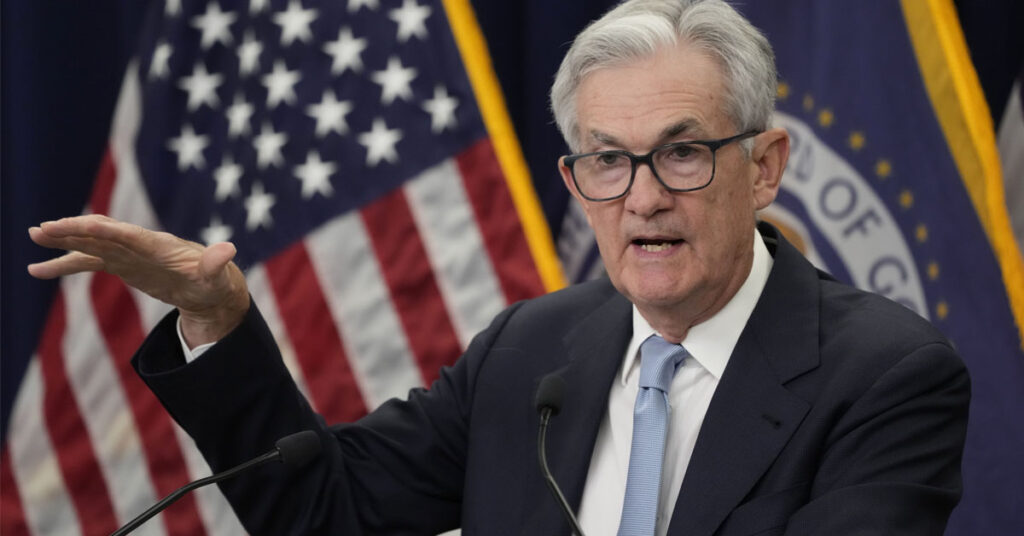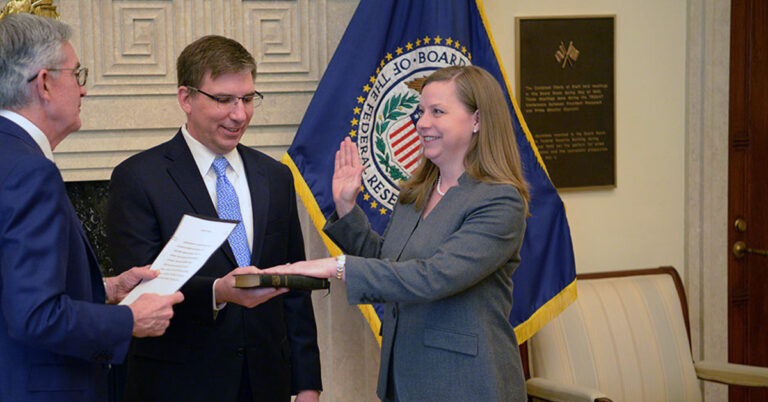As expected, the Federal Reserve announced a 10th consecutive increase to its benchmark rate on Wednesday, raising it by 25 basis points (bps) to a range of 5% to 5.25% — its highest level in 16 years
The bump, which followed the Fed’s recent and more dovish template of 25-bps rate hikes beginning in February, was widely anticipated even though some had speculated that the central bank would consider a pause to help cool the flames that have grilled the nation’s lagging banking sector. But in its post-meeting statement, the Federal Open Market Committee (FOMC) — the body within the Federal Reserve that sets the nation’s monetary policy — noted that the “U.S. banking system is sound and resilient.”
“Conditions in that sector have broadly improved since early March. … We will continue to monitor conditions in the sector. We’re committed to learning the right lessons from this episode and we’re working to prevent events like this from happening again,” Fed Chair Jerome Powell said at a press conference on Wednesday.
The committee vote for the rate increase was unanimous. Since early 2022, the Fed has raised its benchmark interest rate by a total of 5 percentage points, the fastest escalation since the early 1980s, which has severely dented rate-sensitive segments of the economy such as real estate. A median forecast released by the Federal Reserve in March suggested that there would be only one more rate increase this year, giving many hope that May’s hike will signal the end of the central bank’s assertive policy.
Powell stopped short of confirming that during his remarks. Inflation is currently hovering at a level of about 5%, down from the near-double-digit levels of last year but still well above the 2% threshold targeted by the Fed.
“Looking ahead, we will take a data-dependent approach in determining the extent to which additional policy firming may be appropriate,” Powell said.
“In assessing the appropriate stance of monetary policy, the committee will continue to monitor the implications of incoming information for the economic outlook,” the FOMC’s statement echoed. “The committee would be prepared to adjust the stance of monetary policy as appropriate if risks emerge that could impede the attainment of the committee’s goals.”
As in previous comments, Powell acknowledged the impacts of persistent inflation on Americans’ wallets. But he also reiterated that the Fed is committed to getting inflation fully in check.
“My colleagues and I understand the hardship that high inflation is causing, and we remain strongly committed to bringing inflation back down to our 2% goal,” Powell said. “Price stability is the responsibility of the Federal Reserve. Without price stability, the economy does not work for anyone.”
Marty Green, principal at San Antonio-based mortgage law firm Polunsky Beitel Green, said that the Fed continues to telegraph its assertive stance despite looming concerns of a recession.
“The Fed clearly wants more time to assess whether inflation is truly retreating to the Fed’s target level, while the market is hopeful that the Fed will more quickly recognize the need for a rate reduction to respond to, or prevent, a more severe recession,” Green said. “Unfortunately, it is unlikely that there is a Goldilocks rate that will address both concerns, so the Fed is letting markets know it will choose to stay the course to win the inflation fight before becoming overly concerned about a possible recession.”
Still, the FOMC’s policy statement notably omitted verbiage that signal more rate increases on the horizon — language that had appeared to be deliberate in prior post-meeting statements. For example, while a March statement from the Fed mentioned that it “anticipates … additional policy firming,” such language was noticeable absent in the most recent remarks.
And before the Federal Reserve announced its rate-hike decision, a group of Democratic legislators, led by Massachusetts Sen. Elizabeth Warren, Washington Rep. Pramila Jayapal and Pennsylvania Rep. Brendan Boyle, penned a letter urging the Fed to stop increasing rates and keep the economy from spinning off axis.
“We strongly urge you to respect the Fed’s dual mandate, pause your rate hikes, and avoid engineering a recession that destroys jobs and crushes small businesses,” the letter stated.
As it relates specifically to mortgage lending, Green said the fact that many expected Wednesday’s rate increase has already softened the blow.
“The good news is the mortgage market had already priced in the quarter-point increase,” he said. “The hope is that a pause in future increases, along with less interest rate volatility, will cause mortgage rates to return to a more historically consistent spread in relation to 10-year Treasurys. That spread has typically been 1.5% to 2%, but today, that spread is over a point higher. So, it’s possible that mortgage rates might see improvement later this year even without the Fed actually lowering the discount rate.”








